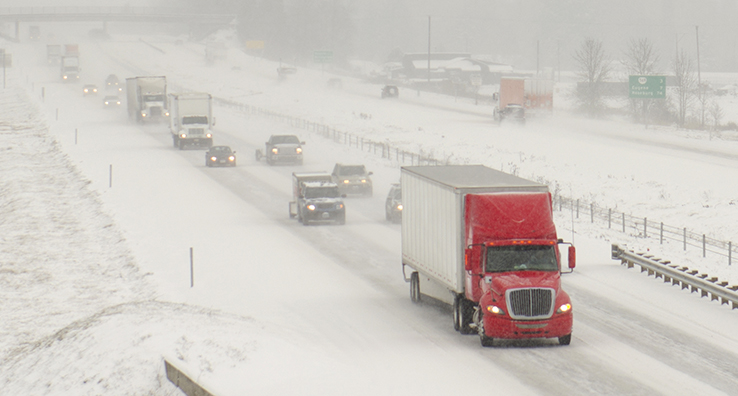How to Keep Truck Drivers Safe for the Rest of Winter

As we count down the days to spring, commercial drivers face weeks of dangerous roads and unpredictable winter weather. Wintertime is one of the busiest and most stressful times for medium-duty truck drivers.
Bad weather brings a range of troubles for drivers as they struggle to maintain control of their trucks in parking lots and on slippery roads. They have to navigate around unpredictable and panicky drivers. And they’re forced to take extra precautions to avoid injuries every time they step outside their vehicles.
To help prepare drivers for the road, we asked Thom Schoenborn, vice president of marketing for Instructional Technologies Inc. (ITI) for some recommendations. When drivers are mentally prepared to deal with winter hazards, it lowers their stress levels and improves their ability to handle common problems. Here’s what he had to say.
Q: As we finish out the winter months ahead, what can drivers do to prepare for unexpected weather hazards?
A: When we think of tips to handle winter road conditions, everyone usually thinks of special driving tips or techniques to avoid dangerous conditions. But the best safety tips start long before drivers hit the road. We think the best way to ensure drivers don’t overlook the most common causes of winter weather breakdowns, DOT violations or accidents is to remember that safety starts with a thorough pre-trip inspection. Taking 10 extra minutes to prepare for bad weather can prevent hours of misery on the road.
We suggest checking the basics like making sure your battery will hold a charge, that your brakes are in good condition, that your chains are solid, and that your tire treads are above the required minimum standards.
Q: That covers the trucks. What about the drivers?
A: You have to make sure your drivers are ready by rehearsing winter maneuvers like turning into skids, using three points of contact when entering/exiting the vehicle, and increasing following distance when visibility turns bad. Also make sure they know how to install tire chains, how to brake and turn on slippery roads, and how to handle a skid, in addition to other hazards.
Q: What are the most important tips you’d give a driver driving in winter conditions?
A: First, you need to slow down to meet the conditions. In extreme conditions, that means stopping completely. If that happens, driver and manager need to get on the phone to figure out a solution. The second tip would be to focus on following distance all the time. Give yourself enough room to brake gently. The heavier weight of your truck means you’ll skid farther if you lose traction.
Q: In addition to the roads, just getting to the truck can sometimes be dangerous too, right?
A: Absolutely. The most common hazard for drivers, especially delivery drivers, are slip and fall injuries. Depending on the type of activities your drivers do, winter injury prevention may be even more important than collision avoidance. For example, according to the Bureau of Labor Statistics, slip and fall injuries are the second most common reason for drivers to miss work. On average, it might cost a company $40,000 for a slip, trip, or fall injury. And 22 percent of slip/fall incidents result in more than a month off from work for drivers.
For more tips to help truck drivers stay safe this winter, check out our transportation training library featuring ITI’s PRO-TREAD courses. See the full list of fleet safety training courses here.





